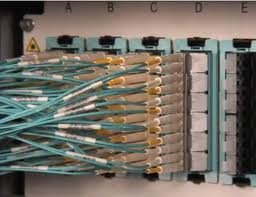Here is another hot-of-the presses standards update: after more than two years of development, the international standard for Automated Infrastructure Management (ISO/IEC 18598 Information technology – Automated infrastructure management (AIM) systems – Requirements, data exchange and applications) is now officially published.
The growing importance of AIM has already led the industry’s standards-defining organizations to recommend the technology in a variety of standards, but the ISO/IEC 18598 standard is the first one strictly dedicated to AIM to specifically address its varied and powerful capabilities, from connectivity management to integration with external systems and processes.
Automatic for the DC people
The standard defines Automated Infrastructure Management as an “integrated hardware and software system that automatically detects the insertion or removal of cords, [and] documents the cabling infrastructure including connected equipment enabling management of the infrastructure and data exchange with other systems.”
AIM systems enable personnel to see, manage and optimize the connected environment in real time, enhancing the ability to:
- Plan and execute changes to the network
- Troubleshoot connectivity issues in real time
- Discover and track the location of connected devices
- Manage and monitor capacity and asset information
One of the key aspects of ISO/IEC 18598 is the inclusion of a common data exchange framework to enable interoperability and integration with external systems.
To illustrate the capabilities of an AIM system, the ISO/IEC 18598 standard refers to intrinsic and extrinsic benefits, as listed below.
Intrinsic benefits are enabled by functionality within the AIM system, and include:
- Accurate and automatic documentation to replace error-plagued manual tracking
- Change management to help reduce the cost of moves, adds and changes.
- Incident management that can decrease downtime and mean-time-to-resolution
- Capacity management, that enables higher port utilization and improves planning
Asset management
Extrinsic benefits are enabled with other systems by the use of data exchange, and address:
- IT-related systems: such as IP telephony management, helpdesk support and information security systems
- Building management systems: including energy management, lighting management, security and access control
- Data Center Infrastructure Management (DCIM)
- Configuration Management Database (CMDB) applications
The publication of ISO/IEC 18598 acknowledges the growing market momentum of AIM systems as well as the critical role AIM systems play in the planning, administration, and growth of enterprise networks. The publication also provides guidance those responsible for specifying an AIM solution, providing a common specification that will enable broader market adoption of AIM in buildings and data centers.
Matias Peluffo is solution architect, Asia Pacific, for Enterprise Building Solutions at CommScope.



